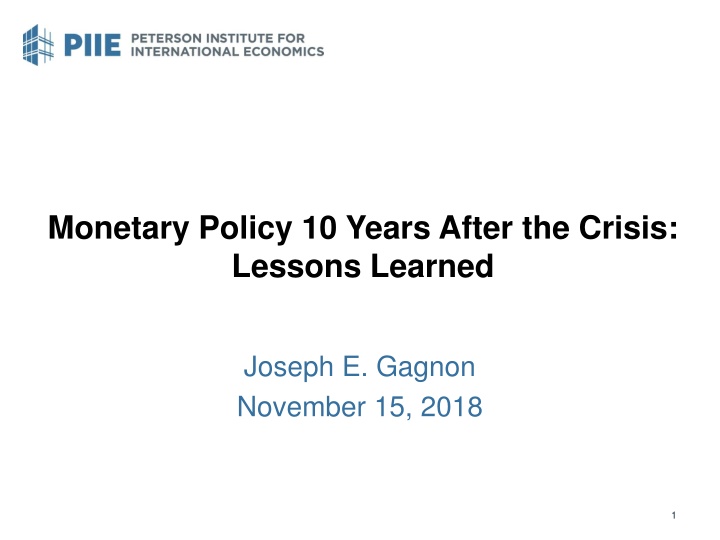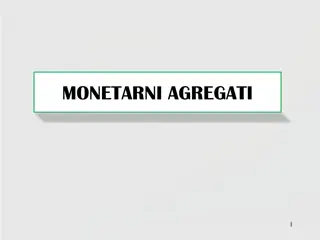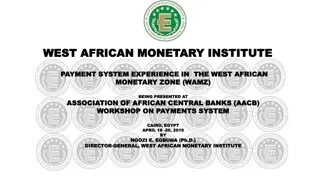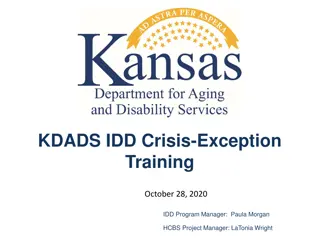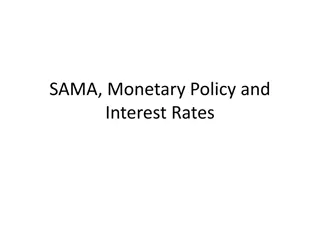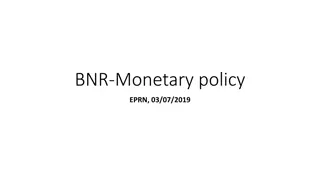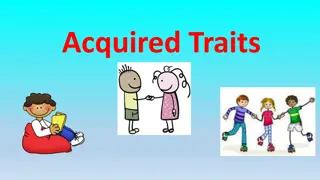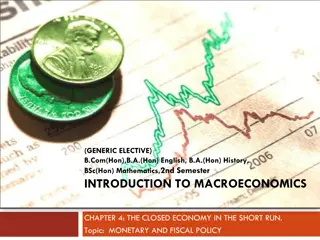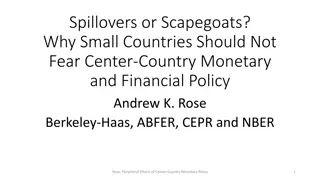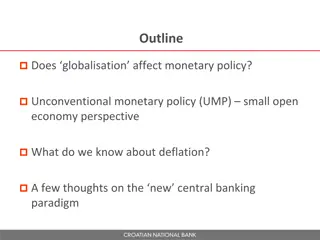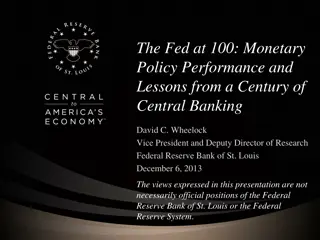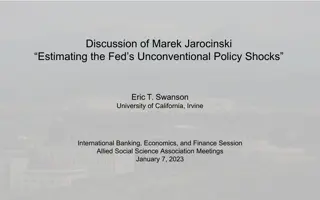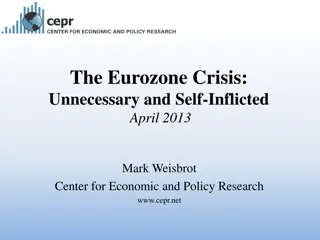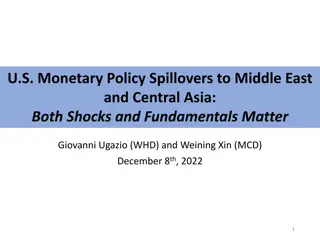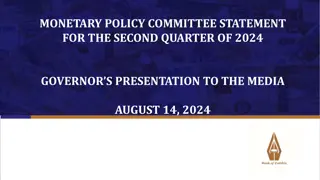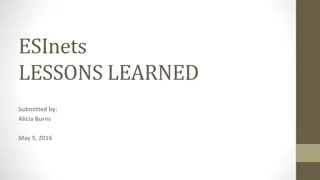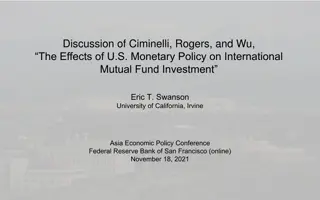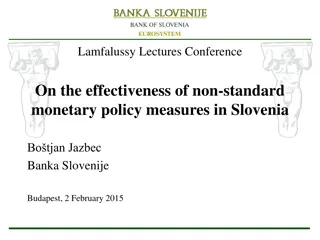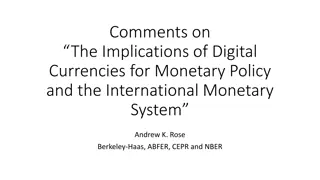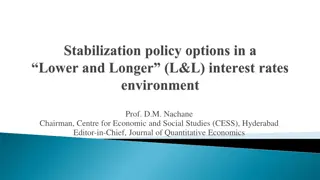Monetary Policy 10 Years After the Crisis: Lessons Learned
Explore the evolution of monetary policy post-crisis, including definitions of monetary and fiscal policies, liquidity traps, and the Federal Reserve's actions during the Great Recession. Key lessons learned emphasize the importance of countercyclical policies, effective use of quantitative easing (QE), and broader proposals for future economic stability.
Download Presentation

Please find below an Image/Link to download the presentation.
The content on the website is provided AS IS for your information and personal use only. It may not be sold, licensed, or shared on other websites without obtaining consent from the author.If you encounter any issues during the download, it is possible that the publisher has removed the file from their server.
You are allowed to download the files provided on this website for personal or commercial use, subject to the condition that they are used lawfully. All files are the property of their respective owners.
The content on the website is provided AS IS for your information and personal use only. It may not be sold, licensed, or shared on other websites without obtaining consent from the author.
E N D
Presentation Transcript
Monetary Policy 10 Years After the Crisis: Lessons Learned Joseph E. Gagnon November 15, 2018 1
Definitions Monetary Policy Printing money to buy assets (to push up their prices) Fiscal Policy Selling assets to cut taxes or increase public spending Both monetary and fiscal policies stimulate output and inflation. 2
Liquidity Trap? As long as asset supply curve slopes upward, monetary policy is potent. Paper currency (with zero coupon) causes supply curve for nominal assets to become horizontal at face value of principal plus coupons. Zero lower bound on interest rates. No reason to limit MP to short-term nominal safe assets. Long-term safe bonds Risky private debt Equity Real Estate 3
Fed Policy in the Great Recession Taylor-type models called for fed funds rate of -6%. (Yellen, March 2009 FOMC transcript) QE1 is now estimated to have been equivalent to a fed funds rate of roughly -1.5%. QE2 brought shadow funds rate down to about -2%. Fed timidity is understandable given newness of QE and political pressure against it. The weak recovery is no mystery. I argued for more than doubling QE1 in December 2009. Joseph E. Gagnon, The World Needs Further Monetary Ease, Not an Early Exit, PIIE Policy Brief 09-22. 4
Monetary Lessons Learned Strong countercyclical policy is essential for a strong recovery. QE effects are essentially identical to conventional monetary policy effects. Macroeconomic, international, distributional. No need for special scrutiny or coordination. QE very profitable so far. Raises both level and volatility of Fed profits. Profit volatility is counter-cyclical, and thus helpful. Use macro-prudential policies to contain financial risk. LTV & DTI limits, bank capital standards. 5
Using QE Effectively in the Next Recession Joseph E. Gagnon and Brian Sack, QE: A User s Guide, PIIE Policy Brief 18-19, October 2018. When fed funds rate hits zero, switch to QE to achieve shadow funds rate below zero. Each $300 billion in QE assets is equivalent to a cut in the funds rate of 0.25%. Target for QE assets responds to economic conditions and has inertia similar to the funds rate. Project QE holdings alongside projected funds rate. Exit starts with funds rate. QE assets run off later. No comparable restriction on rate increases. QE purchases should be held long term. 6
Broader Proposals Adopt nominal GDP growth target of 5%. Switch to a rising NGDP level target at the zero bound. Expand the scope of assets Fed can buy. Forecast targeting rule: Set policy to achieve goals over 3-year horizon Cross-validate with private-sector forecasts 7
Keep the Ammunition Locker Loaded Allow Fed to purchase any financial asset. A neutral benchmark may be the market portfolio. Conduct QE proportionally in all assets. Enable helicopter money (MP + FP) with strict rules. Only at zero bound. Only when below inflation & employment objectives. Only if Treasury Secretary approves. Congress sets distribution formula in advance. Amount and timing set by FOMC. Backed by automatic draw on Treasury securities. Better distributional effects than monetary policy alone. 8
